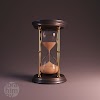ACCURACY, PRECISION OF INSTRUMENTS AND ERRORS IN MEASUREMENT
What is error ?
Measurement is the foundation of all experimental science and technology. The result
of every measurement by any measuring instrument contains some uncertainty. This
uncertainty is called error.
Every calculated quantity which is based on measured values,
also has an error. We shall distinguish between two terms: accuracy and precision. The
accuracy of a measurement is a measure of how close the measured value is to the true value of
the quantity. Precision tells us to what resolution or limit the quantity is measured.
The accuracy in measurement may depend on several factors, including the limit or the resolution of the measuring instrument. For example, suppose the true value of a certain length is near 3.678 cm. In one experiment, using a measuring instrument of resolution 0.1 cm, the measured value is found to be 3.5 cm, while in another experiment using a measuring device of greater resolution, say 0.01 cm, the length is determined to be 3.38 cm.
The first measurement has more accuracy (because it is closer to the true value) but less precision (its resolution is only 0.1 cm) while the second measurement is less accurate but
more precise. Thus every measurement is approximate due to errors in measurement. In
general, the errors in measurement can be broadly classified as (a) systematic errors and
(b) random errors.
Systematic errors
The systematic errors are those errors that tend to be in one direction, either positive or
negative. Some of the sources of systematic errors are :
(a) Instrumental errors that arise from the errors due to imperfect design or calibration
of the measuring instrument, zero error in the instrument, etc. For example, the
temperature graduations of a thermometer may be inadequately calibrated (it may read
104 °C at the boiling point of water at STP whereas it should read 100 °C); in a vernier
callipers the zero mark of vernier scale may not coincide with the zero mark of the main
scale, or simply an ordinary metre scale may be worn off at one end.
(b) Imperfection in experimental technique or procedure To determine the temperature
of a human body, a thermometer placed under the armpit will always give a temperature lower than the actual value of the body temperature. Other external conditions (such as changes in temperature, humidity, wind velocity, etc.) during the experiment may systematically affect the
measurement.
(c)Personal errors that arise due to an individual’s bias, lack of proper setting of the apparatus or individual’s carelessness in taking observations without observing proper precautions, etc. For example, if you, by habit, always hold your head a bit too far to the right while reading the position of a needle on the scale, you will introduce an error due to parallax.
Systematic errors can be minimised by improving experimental techniques, selecting
better instruments and removing personal bias as far as possible.
Random errors The random errors are those errors, which occur irregularly and hence are random with respectto sign and size. These can arise due to random and unpredictable fluctuations in experimental conditions (e.g. unpredictable fluctuations in temperature, voltage supply, mechanical vibrations of experimental set-ups, etc), personal (unbiased) errors by the observer taking readings, etc. For example, when the same person repeats the same observation, it is very likely that he may get different readings everytime.
very important topics are given below related to this chapter (Units and measurement)
Absolute Error, Relative Error and Percentage Error Click here to know more
To know How to find errors click here








0 Comments